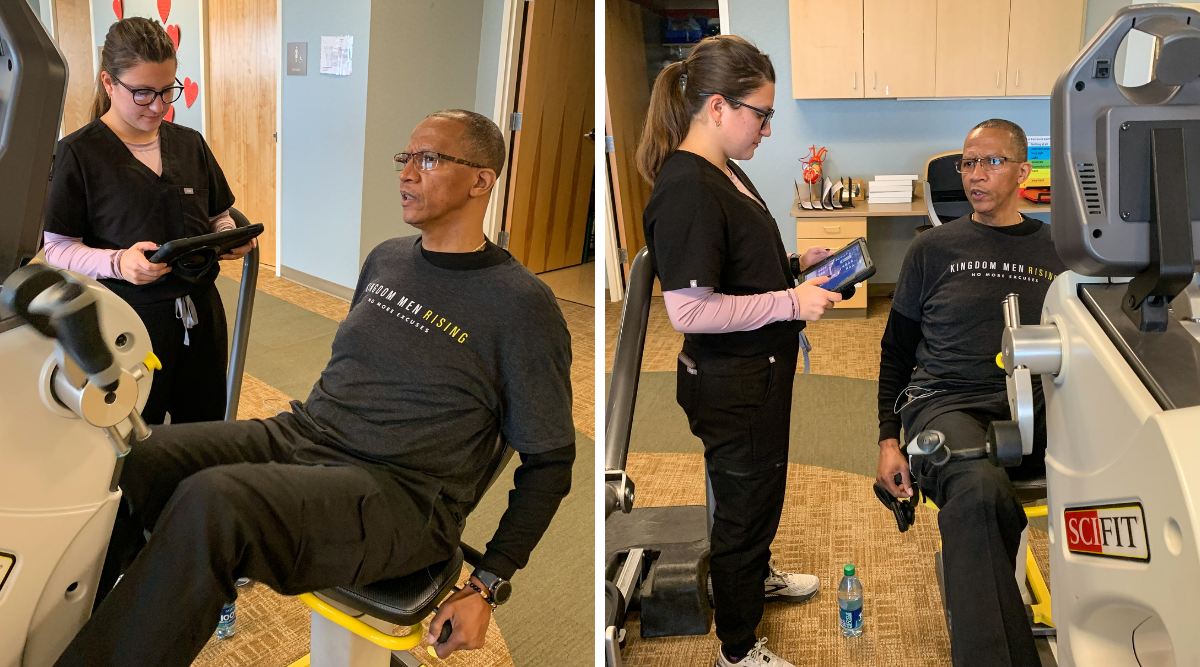Nancy Davison, director of Imaging at IU Health North, Saxony and Tipton hospitals, has been at IU Health Saxony since it opened its doors 12 years ago—she even formed its first Imaging team. Now, she’s gearing up to double the size of her department as construction in the Fishers Community Impact Project continues.
By Charlotte Stefanski, cstefanski@iuhealth.org, writer for IU Health’s Indianapolis Suburban Region
More than a decade ago, as the opening of IU Health Saxony—soon to be IU Health Fishers—was announced, Nancy Davison, director of Imaging, was working to build her team of technologists, radiologists and more.
At the time, there wasn’t even a building to show prospective team members around. Instead, Davison interviewed them at IU Health’s Fairbanks Hall in downtown Indianapolis and showed interviewees blueprints and renderings.
It was an exciting time for Davison. She had been working downtown as director of Imaging at Riley Hospital for Children. When she heard a hospital was coming to Fishers, where she and her husband have lived for decades now, she jumped at the opportunity.
“In my entire career, I hadn’t ever formed a complete department or been part of a start-up. You don’t have that opportunity very often,” Davison says. “The opportunity to do that in the community where I live was really important to me.”
A passion for imaging
While Davison originally went to college for social work, she was introduced to Imaging and became intrigued.
She instantly fell in love with ultrasound and x-ray while completing her bachelor’s degree, and eventually, Davison wanted to advance her career and went back for her master’s degree.
She held the director position at Riley for 10 years before moving on to lead imaging at Saxony, and then eventually two other hospitals in the IU Health Indianapolis Suburban Region, IU Health North and Tipton.
“I really love developing programs,” Davison says. “Program development gives an opportunity to take a look and see where we are and where we can go.”
Within her roles, Davison developed a passion for both leadership and patient care. After being in Imaging for decades, she was recently asked if it ever gets boring.
“When I think about imaging and the changes I’ve seen, since I started at Riley to what we have today, is incredible, the amount changes in technology,” she explains. “Imaging continually changes and we continue to have new challenges. That’s what’s exciting for me.”
Doubling in size
As IU Health Saxony marked a major milestone in the expansion project this December, the Imaging department is gearing up to double its size.
Once the project wraps up, the department will have two MRI machines; two CT scanners; an additional ultrasound room; an additional mammography and ultrasound system dedicated to women’s health, which will increase mammography capabilities; and a second radiologist will be welcomed to the team.
Currently, Imaging is in the first phase of its expansion, with construction crews working on the space for the two MRI machines. The new scanner will arrive in the first quarter of 2024.
“The Imaging teams in the ISR are really strong. At Saxony, we have a few team members that are part of the original team, so they’ve been here for all,” Davison says. “Our manager, Ashley Poe, was actually one of our original team members. We’re just really, really blessed to have a strong staff.”
The culture of IU Health Saxony
IU Health Saxony’s expansion is a lengthy project, with a completion date set for 2025.
It can be challenging to keep team members engaged through construction, but Davison says teams have been involved since day one.
Several of the department’s frontline team members were involved in the design of the room, meeting with architects and voicing their needs in the new space.
“Team members’ voices were heard and they continue to be heard. We want our team members to continue to feel like this is their space. This is where they’re going to be working and I think ownership is an important part of that engagement.”
It’s part of the hospital’s culture, which has held strong since its doors opened in 2011.
Davison says there’s a warm feeling when you enter the hospital—patients and visitors can see that team members want to be there and want to help in any way possible.
“I think a lot of the culture is a servant culture. We want to make sure that patient and team members’ needs are met and they’re heard,” Davison says. “The folks that have been here, I would say that’s what their culture is. They’re really servant leaders.”
As the hospital’s expansion continues and teams gear up to serve their community in new and bigger ways, Davison is most looking forward to the growth and possibilities of what can be provided to her community.
“I’m excited about the services that we can provide as a community hospital—The expansion of services and the ability to really offer the community what it needs,” she says.


